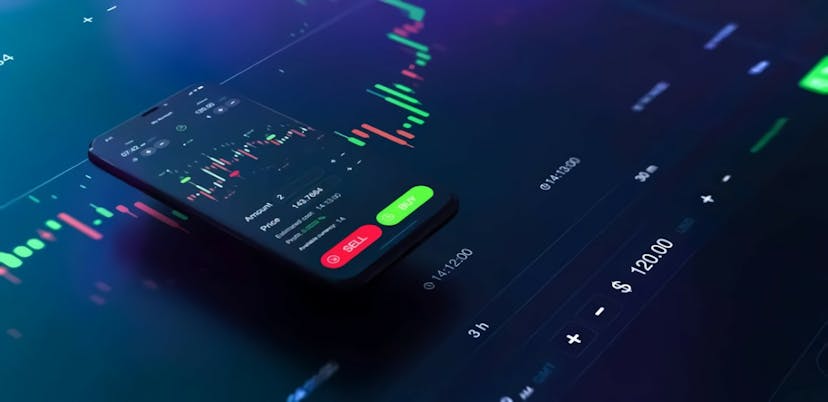High Frequency Trading Strategies: Unveiling the Secrets of Lightning-Fast Trades

Introduction
In the dynamic world of financial markets, speed is of the essence. Traders are constantly on the lookout for strategies that can give them a competitive edge. One such strategy that has gained immense popularity in recent years is high-frequency trading (HFT). In this article, we will delve into the intricacies of high-frequency trading strategies, exploring their benefits, risks, and the factors that contribute to their success.
Table of Contents
- What is High-Frequency Trading?
- The Mechanics of High-Frequency Trading
- Market Making Strategies
- Statistical Arbitrage
- News-Based Trading
- Algorithmic Trading
- Risk Management in High-Frequency Trading
- The Role of Technology
- Regulatory Challenges and Concerns
- Advantages of High-Frequency Trading Strategies
- Disadvantages and Risks of High-Frequency Trading
- How to Get Started with High-Frequency Trading
- Emerging Trends in High-Frequency Trading
- The Future of High-Frequency Trading
- Conclusion
1. What is High-Frequency Trading?
High-frequency trading, also known as HFT, is a trading strategy that relies on advanced algorithms and high-speed computing systems to execute trades in lightning-fast speeds. HFT firms aim to profit from small price discrepancies in the market by executing a large number of trades within milliseconds or even microseconds.
2. The Mechanics of High-Frequency Trading
HFT strategies operate based on sophisticated algorithms that analyze vast amounts of market data, including price movements, order book updates, and news releases. These algorithms identify profitable trading opportunities and execute trades automatically without human intervention.
3. Market Making Strategies
One popular high-frequency trading strategy is market making. Market makers provide liquidity to the market by placing both buy and sell orders for a particular security. They profit from the bid-ask spread—the difference between the buying and selling prices. By constantly adjusting their quotes based on market conditions, market makers ensure that there is a continuous flow of liquidity in the market.
4. Statistical Arbitrage
Statistical arbitrage is another widely used strategy in high-frequency trading. This strategy involves identifying pricing inefficiencies between related securities and profiting from the price convergence. By analyzing historical data and employing statistical models, HFT firms can detect patterns and execute trades accordingly.
5. News-Based Trading
News-based trading is a strategy that capitalizes on the rapid dissemination of news and its impact on market prices. HFT firms use algorithms to scan news sources and social media platforms for relevant information. When a significant news event occurs, these algorithms analyze its potential impact on the market and execute trades accordingly.
6. Algorithmic Trading
Algorithmic trading is the backbone of high-frequency trading strategies. It involves using pre-programmed instructions to automatically execute trades based on specific conditions or criteria. These algorithms can process vast amounts of data and execute trades at speeds impossible for human traders.
7. Risk Management in High-Frequency Trading
Managing risk is a crucial aspect of high-frequency trading. HFT firms employ various risk management techniques to mitigate potential losses. These include setting position limits, employing stop-loss orders, and continuously monitoring market conditions.
8. The Role of Technology
Technology plays a pivotal role in high-frequency trading. HFT firms invest heavily in cutting-edge infrastructure, including low-latency trading systems, co-location services, and direct market access. The speed and efficiency of their technology can make all the difference in executing profitable trades.
9. Regulatory Challenges and Concerns
High-frequency trading has attracted its fair share of regulatory scrutiny. Regulators are concerned about the potential for market manipulation, increased market volatility, and unfair advantages gained by HFT firms. To address these concerns, regulators have introduced measures such as circuit breakers, increased monitoring, and stricter reporting requirements.
10. Advantages of High-Frequency Trading Strategies
High-frequency trading strategies offer several advantages. Firstly, they provide liquidity to the market, ensuring efficient price discovery. Secondly, HFT firms can capitalize on small price discrepancies and make profits on a large scale due to their high trading volumes. Lastly, high-frequency trading has the potential to lower transaction costs for market participants.
11. Disadvantages and Risks of High-Frequency Trading
Despite its advantages, high-frequency trading also carries certain risks. The speed and complexity of HFT systems can lead to technical glitches and system failures, resulting in significant losses. Additionally, HFT strategies can amplify market volatility and contribute to flash crashes. There is also a concern that HFT firms with superior technology may gain an unfair advantage over traditional market participants.
12. How to Get Started with High-Frequency Trading
Getting started with high-frequency trading requires a deep understanding of financial markets, trading strategies, and advanced technology. Traders interested in HFT should familiarize themselves with algorithmic trading, data analysis, and risk management techniques. It is also essential to stay updated on regulatory developments and market trends.
13. Emerging Trends in High-Frequency Trading
The field of high-frequency trading is constantly evolving. Emerging trends include the use of machine learning and artificial intelligence algorithms, increased focus on alternative data sources, and the exploration of new asset classes. As technology advances and market dynamics change, HFT strategies will continue to adapt and innovate.
14. The Future of High-Frequency Trading
The future of high-frequency trading looks promising. As technology becomes more advanced and accessible, more market participants may adopt HFT strategies. However, regulatory oversight will likely increase to ensure fair and transparent markets. The balance between innovation and regulation will shape the future landscape of high-frequency trading.
15. Conclusion
High-frequency trading strategies have revolutionized the financial markets, providing unprecedented speed and efficiency. These strategies enable traders to capitalize on small price discrepancies, contributing to market liquidity and price discovery. However, it is crucial to acknowledge the risks and challenges associated with high-frequency trading. As the field continues to evolve, market participants and regulators must strive to strike the right balance between innovation and investor protection.
FAQs
Q1. Can individuals engage in high-frequency trading?
A1. High-frequency trading is predominantly carried out by institutional investors and specialized firms due to the high costs and technological requirements involved. Individual traders may find it challenging to compete with these entities.
Q2. What are some popular high-frequency trading platforms?
A2. Some popular high-frequency trading platforms include TradAir, FlexTrade, and Kx for Flow.
Q3. Is high-frequency trading legal?
A3. High-frequency trading is legal in most jurisdictions. However, regulatory bodies impose rules and oversight to ensure fair and transparent markets.
Q4. How much capital is required for high-frequency trading?
A4. The capital requirements for high-frequency trading can vary significantly. It depends on the trading strategy, market access costs, and the level of risk management employed.
Q5. Are there any alternatives to high-frequency trading?
A5. Yes, there are alternative trading strategies, such as swing trading, value investing, and long-term trend following, which do not rely on high-speed trading.


